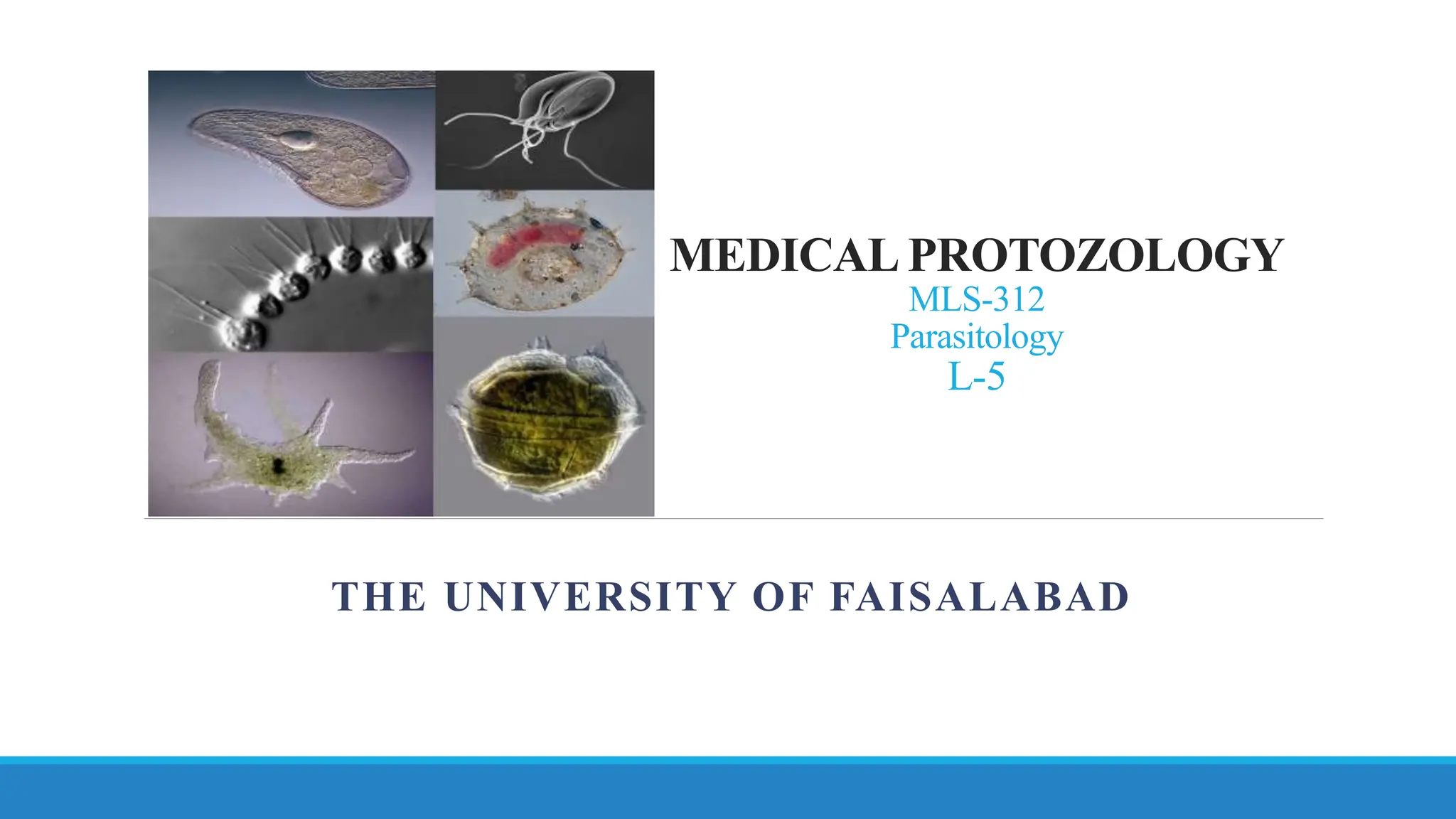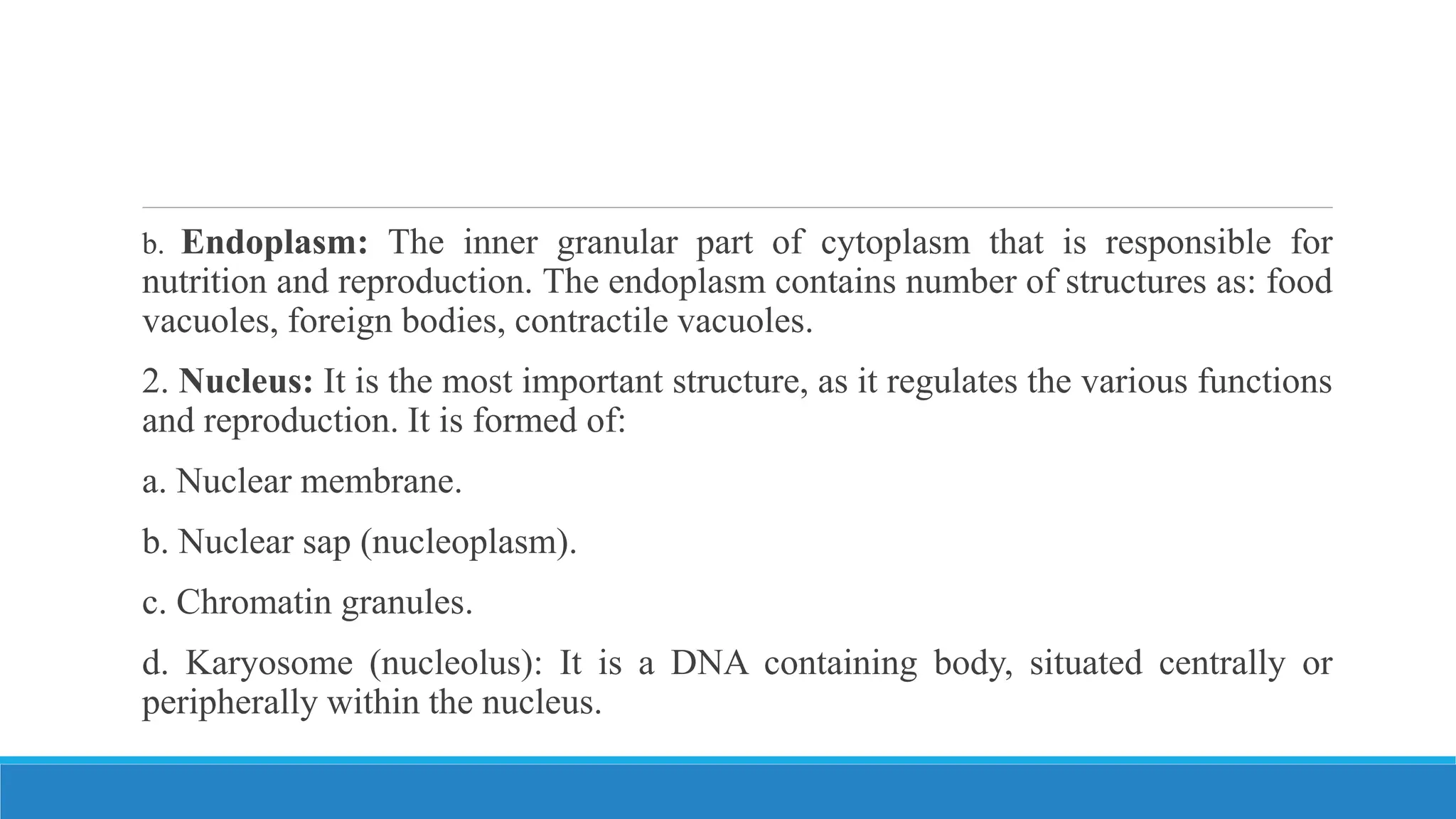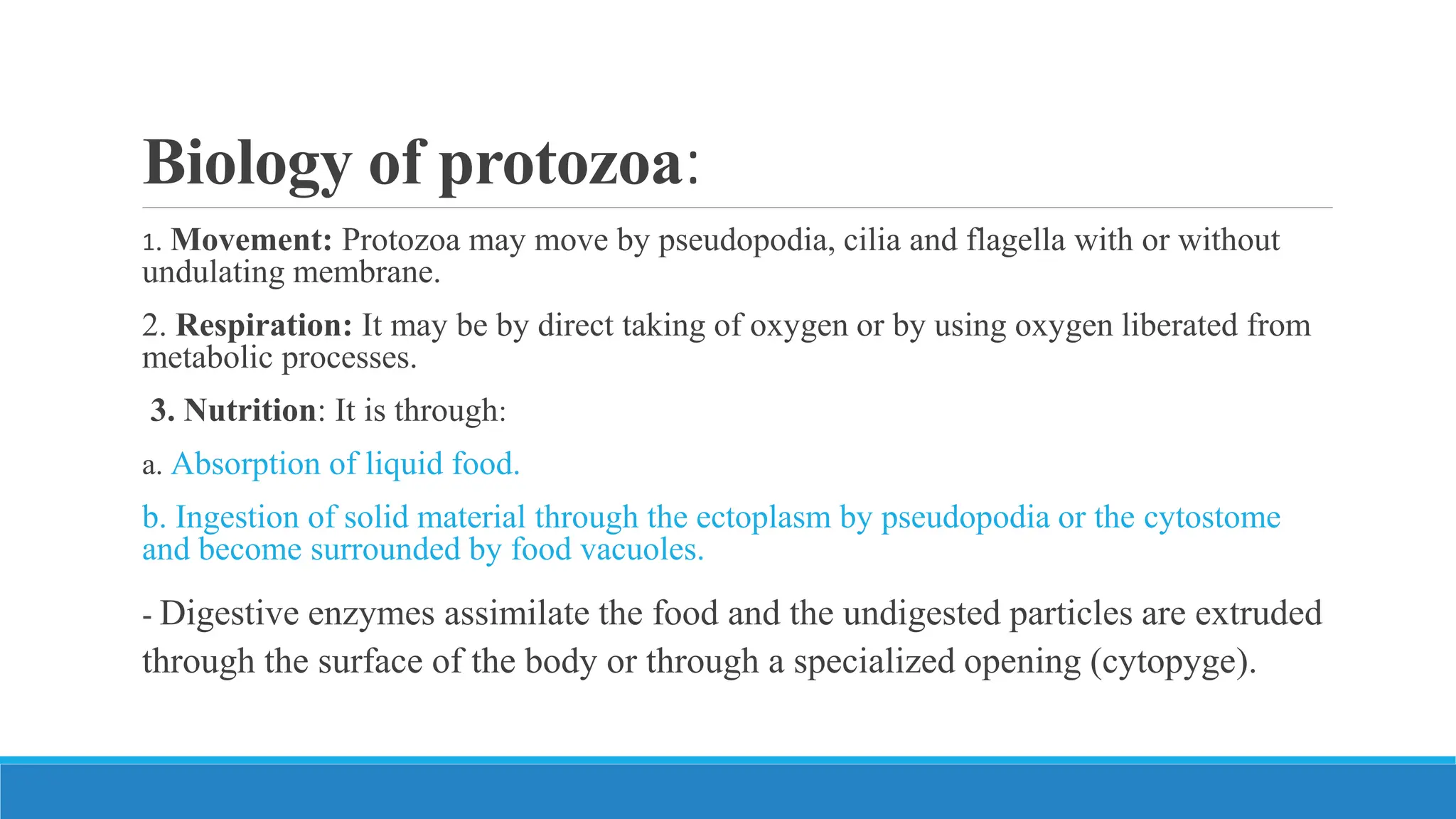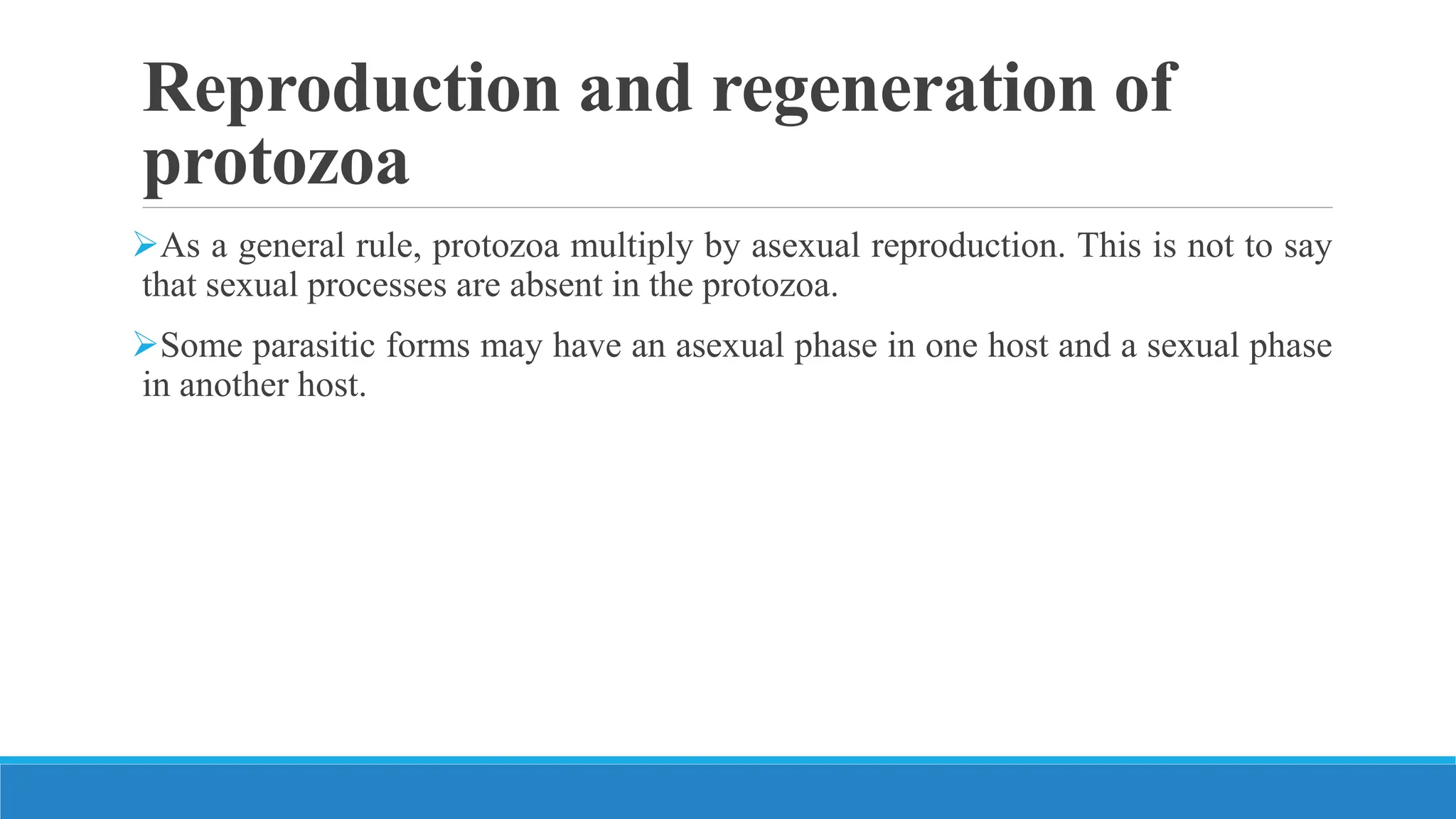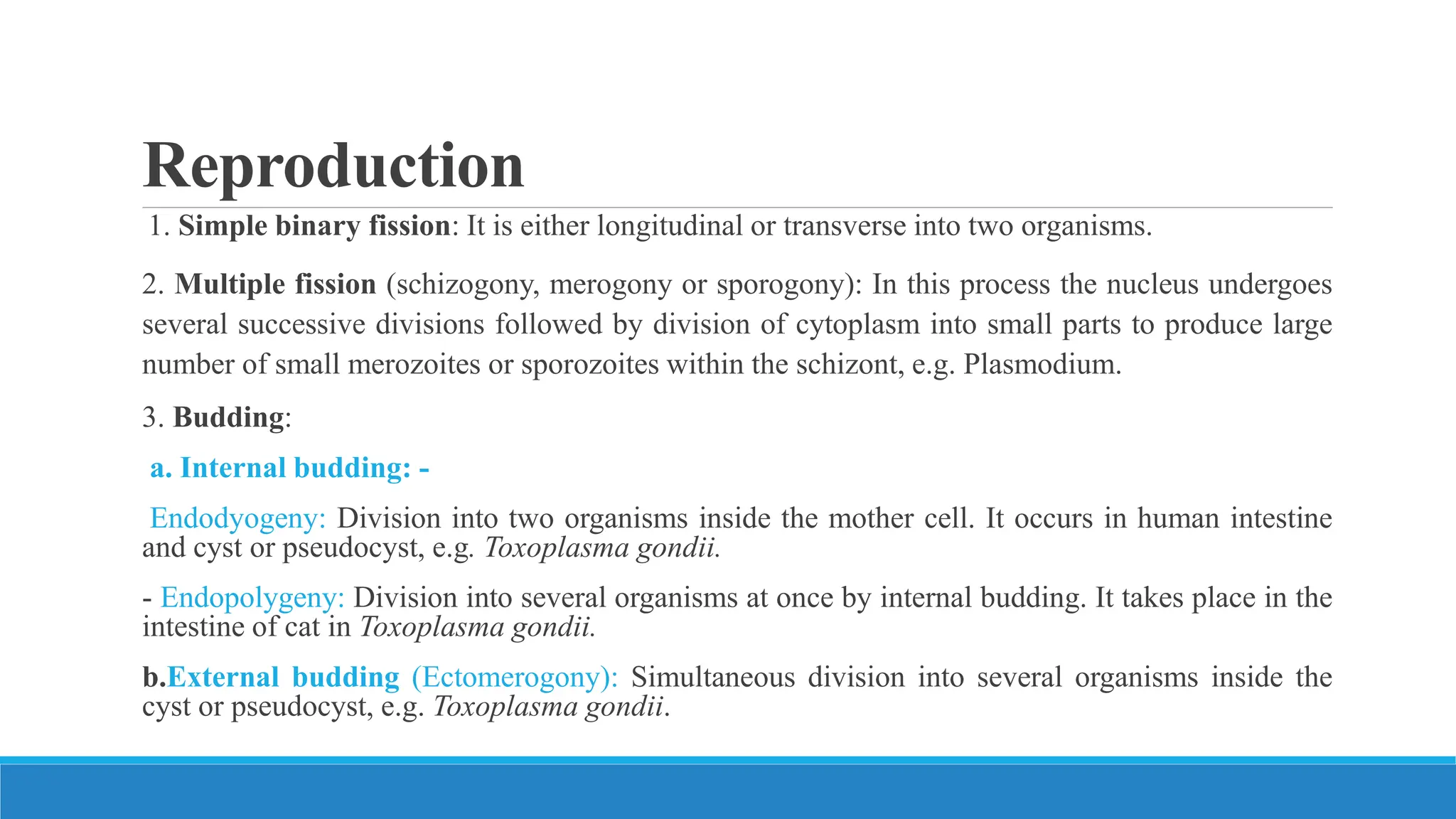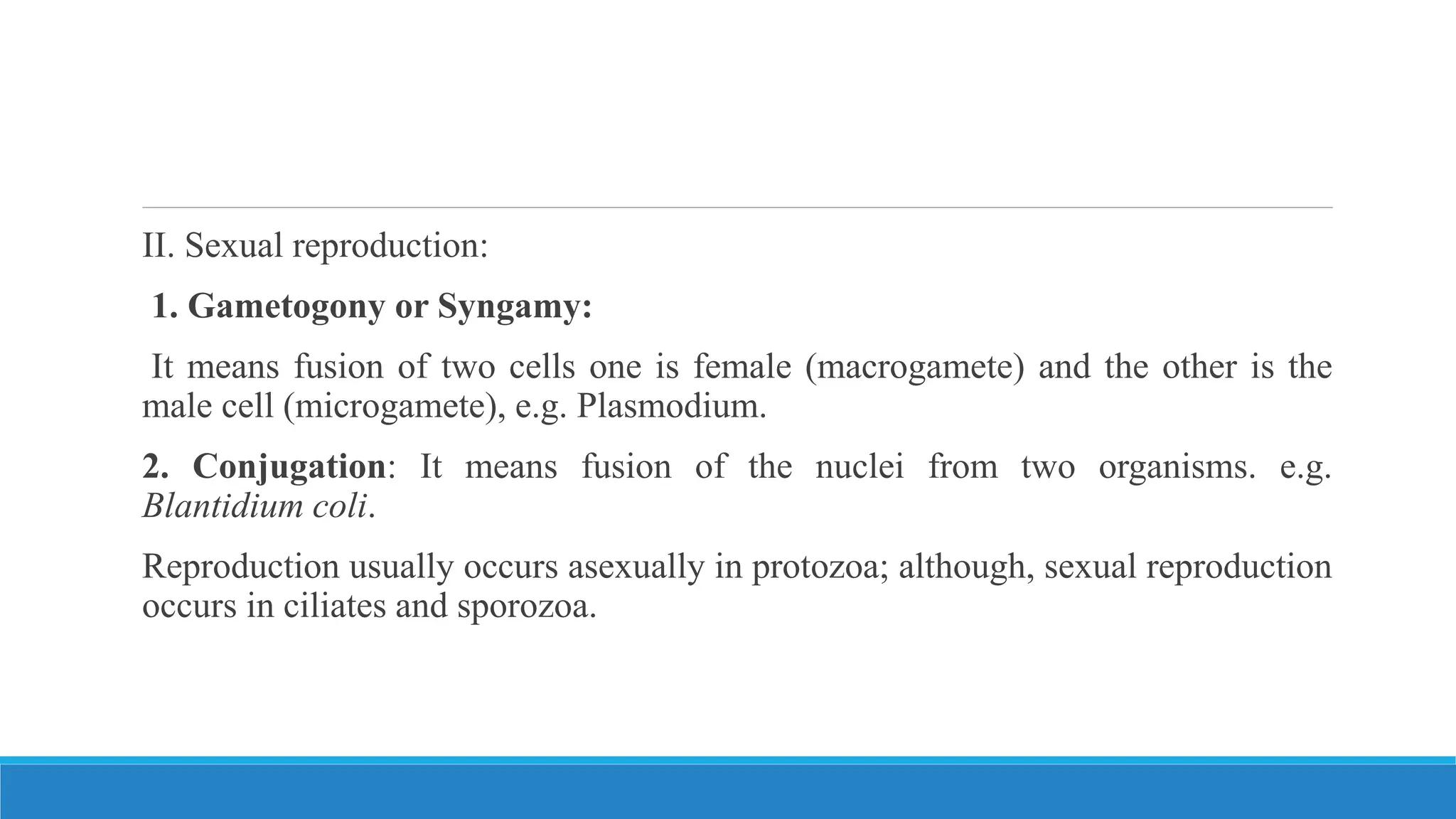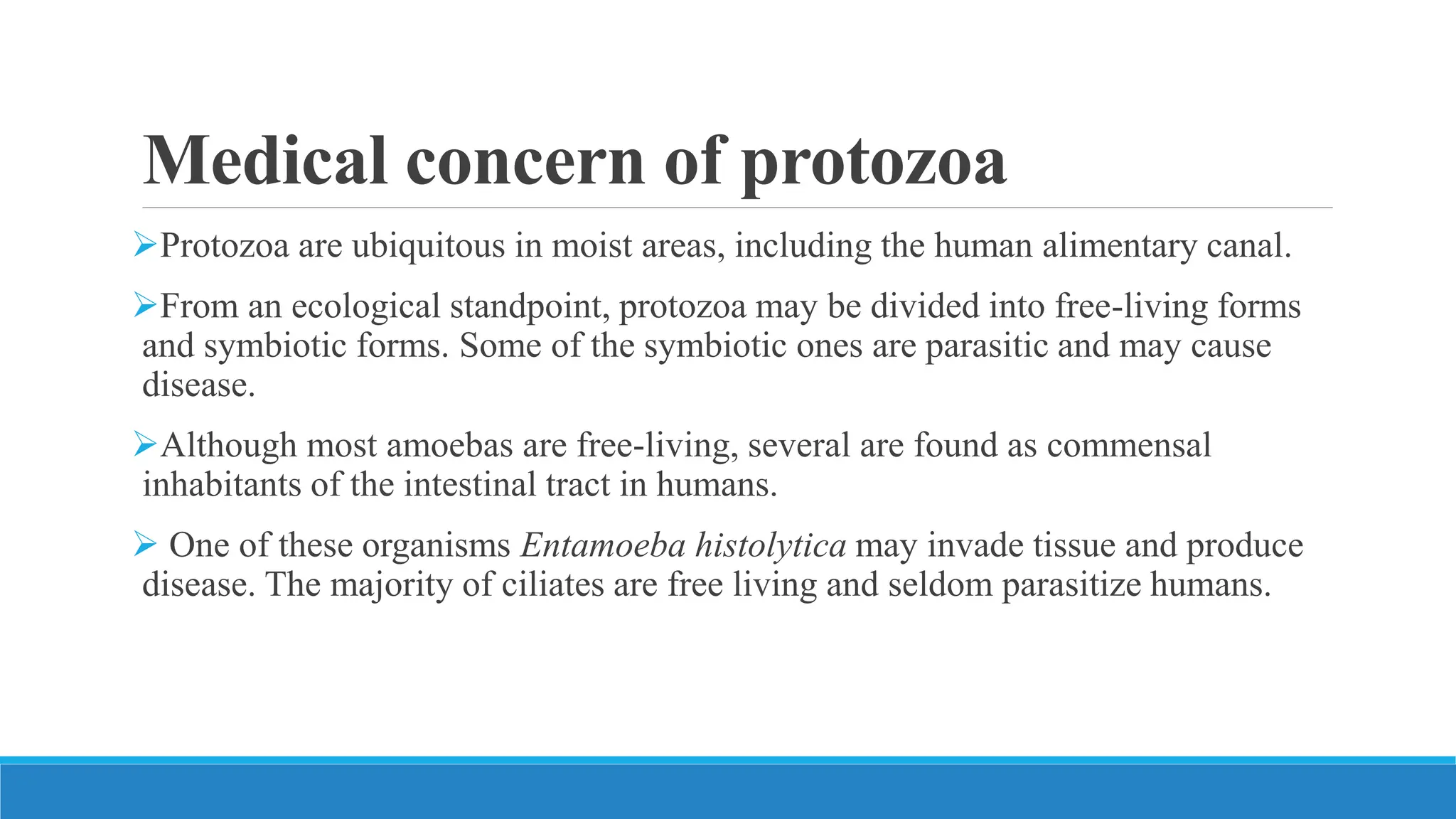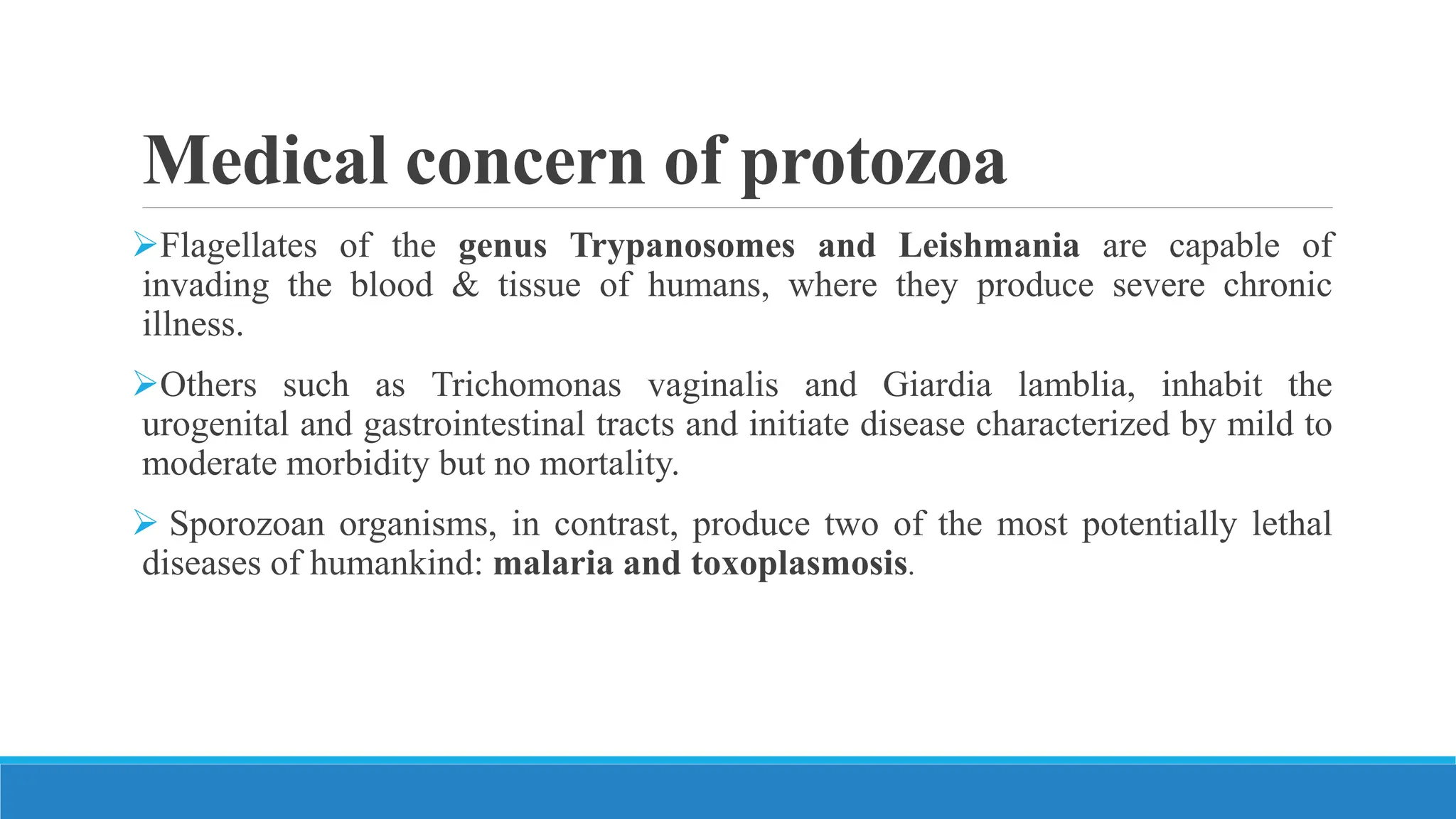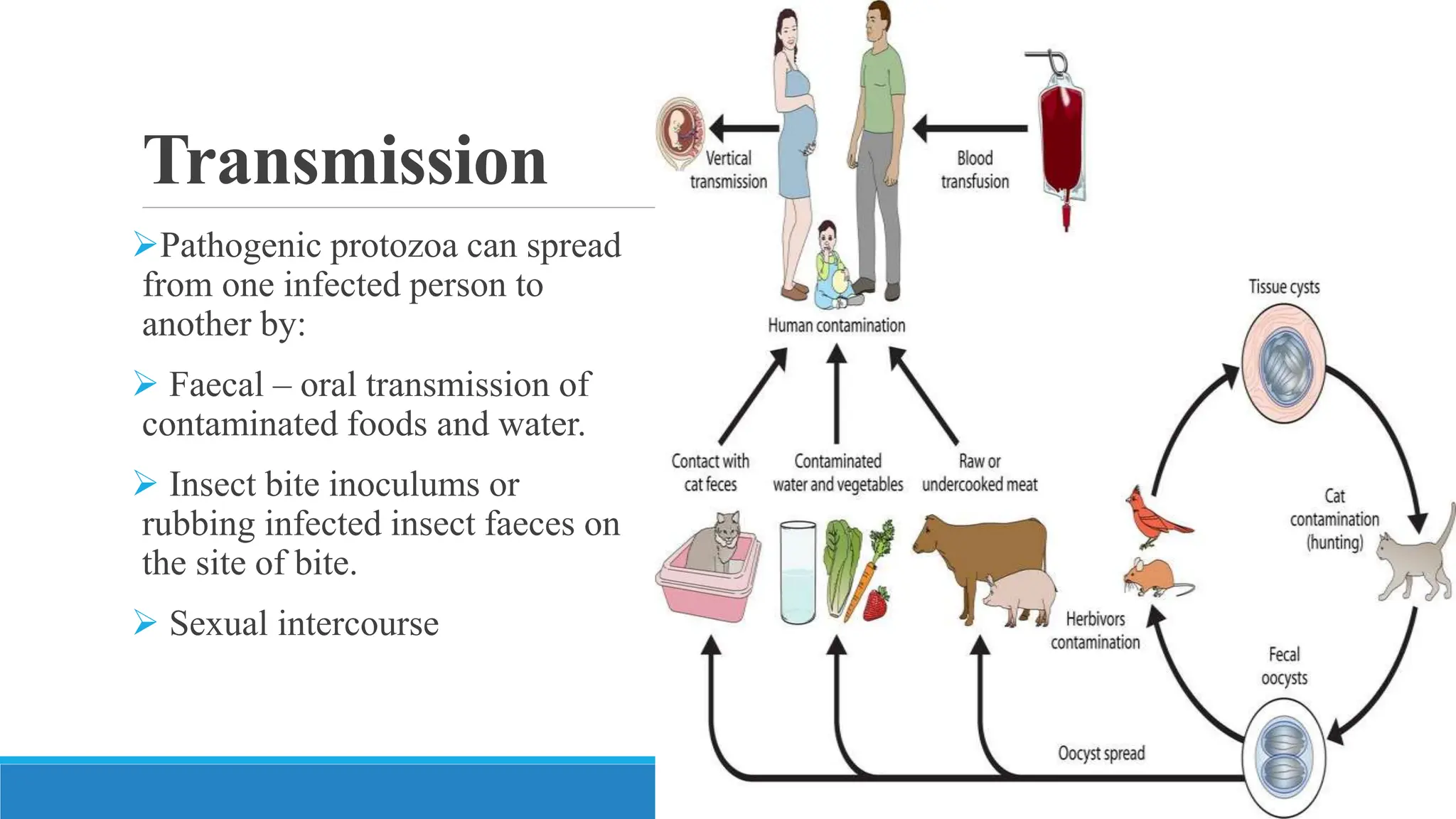This document provides an introduction to protozoology, the study of protozoa. It discusses the key characteristics of protozoa including their morphology, occurrence in different habitats, modes of locomotion, nutrition, reproduction, life cycles, classification, medical importance as pathogens, mechanisms of transmission and pathogenesis, and approaches to treatment with antiprotozoal agents. The document serves as an overview of protozoa with a focus on those that are medically relevant.
